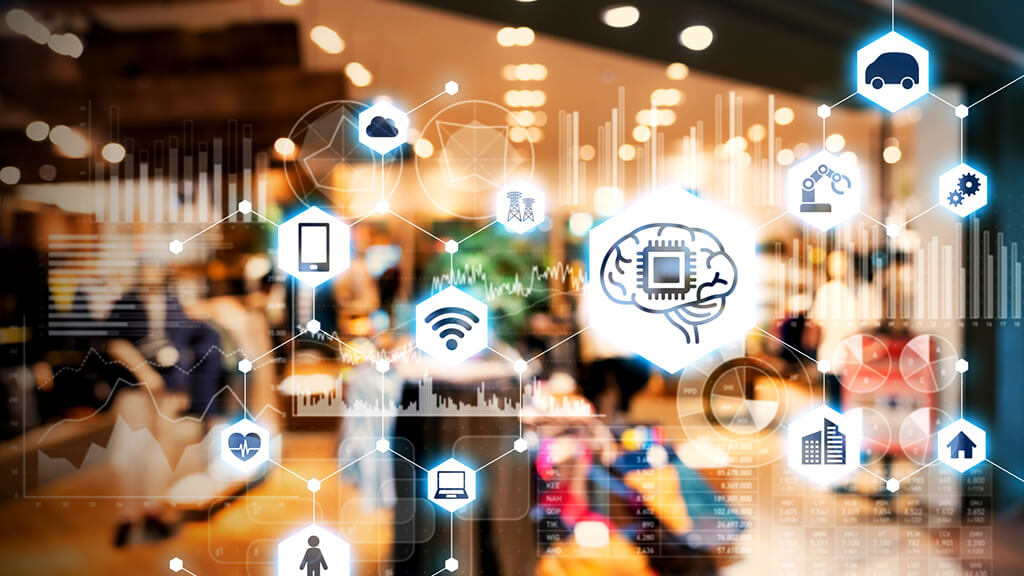Retail Industry
Digital evolution in retail
Transform shopping experiences across all channels and improve sustainability across your value chain with our cloud retail solutions.


SAP Business One for Retail

Put the customer at the center of all your marketing decisions and increase conversion rates with our software. Stay ahead of market trends, optimize pricing and promotions, and improve every aspect of your daily merchandising operations, from purchasing and allocation to performance.
- Centralized data management
- Forecast demand and retail sales
- Merchandise and assortment planning
- Management and execution of goods
- Omnichannel prices and promotions
79 % of retail organizations find it important to quickly and efficiently change prices across all channels based on current trends and customer insights.

Make sure your retail purchasing and sourcing teams are fast, agile, and exceptionally knowledgeable, with software from SAP. Our solutions can help you efficiently source ethical and sustainable products, control risks and costs, and collaborate with a global network of suppliers. Drive brand differentiation with innovative, private-label sourcing and use AI-driven analytics to improve contract negotiations, optimize orders, and save money.
- Strategic sourcing and contract management.
- Suppliers and risk management.
- Procurement Analysis.
- Goods and indirect purchases.
- Smart invoice management.

Get products to stores and clients at the right time with our retail supply chain management solutions. Work with partners and suppliers, reduce waste and emissions, and meet demand from anywhere instantly and at optimal costs.
- Integrated Supply Chain Planning.
- Retail inventory management.
- Omnichannel fulfillment.
- Warehouse and transportation management.
- Retail logistics and track and trace.
70% of retailers find it important to have visibility into the global inventory pool and optimize it for a "source and fulfill anywhere" model.

Meet the changing expectations of shoppers in physical and online stores, and provide consistent, frictionless customer experiences across all channels with our software. Equip store associates with real-time customer and inventory data, offer mobile POS and self-checkout, support smart store technologies, and create engaging digital storefronts and e-commerce experiences.
- Real-time customer and inventory visibility.
- Smart and automated store processes.
- Support for smart store technologies.
- Omnichannel point-of-sale software.
- Omnichannel e-commerce platform.
.webp?width=281&height=478&name=retail%20(1).webp)
Industry Solutions
Whether you're a small independent business or a subsidiary of a larger company, you need a clear view of all aspects of your business to stay competitive. You need to streamline processes and find better ways to access information that will result in the best business decisions.
Transform your business and build a leadership position in today's demanding omnichannel retail environment.
A versatile point of sale manager designed and developed to satisfy those companies dedicated to the activity of commerce.
Software for businesses that allows you to easily, efficiently and quickly manage the different sales tasks of any product, whatever the sector.
Why Should You Use This SAP System in Your Retail Business?
Top 10 Features of SAP Business One for Retail:
-
Integrated CRM
Get the means to convert prospects into customers, increase sales and profitability, increase customer satisfaction, and gain visibility into the customer lifecycle. -
After sales service
Find the services, repairs and alterations included at the Point of Sale to simplify the process and offer optimal after-sales service to your consumers. The features of SAP Business One allow you to record and track customers who have questions or an incident, allowing you to classify them and generate reports for better control. -
Planning
An essential component of any retail operation is planning. Use the right SAP Business One module to eliminate spreadsheets and guesswork, and accurately estimate material requirements to include on purchase orders. -
Analytics
The reports provide detailed information on all transactions. You can target financials, sales or profitability, for a deeper analysis of the situation of your company. The system offers a wide variety of options for creating reports that can be customized through query builder, drag and link, and pivot tables. Also, standard reports that the ERP already has can be generated. -
Store Management
The functions for administration of stores of SAP Business One for retail offer the total support of the information for the management of the central offices and their branches. This ERP allows integrating the point of sale, eCommerce, the purchasing area, prices and promotions, in addition to the supply chain. -
Loyalty Cards
SAP Business One provides an application designed to significantly improve customer retention through points and bonuses. Thus, they will return constantly, and their satisfaction levels will be improved. -
Point of Sale
With the sales module, you can manage from the quote to the billing of the customer. You can also suggest items to your customers, control advances, partial deliveries and discounts, invoice and obtain reports. -
Online Sales
An online store is the next logical step for any merchant who wants to stay competitive. The store provides the possibility of having 24/7 operations without having to incur the worries of finding personnel in a small store. -
Orderly Growth
SAP ERP takes care of bringing progressive functionality to retailers who want to grow their business. In this way, they will be able to optimize their operations and carry them out more effectively. -
Franchises and Branches
Because data storage is centralized, reports can be accessed, and inventory managed across multiple locations to provide centralized control of stores and improve strategic decision-making.





Proven experience in various industries
- 208 of the 250 largest retailers in the world manage with SAP solutions.
- 8/8 of the most innovative automotive companies in the world manage with SAP solutions.
- 46 of the 50 safest banks in the world manage with SAP solutions.
- 97 of the 100 best universities in the world manage with SAP solutions
- 7/10 of the best hospitals in the world manage with SAP solutions.
- 41,100 consumer product companies from 134 countries are innovating with SAP solutions.
Ask about the benefits of SAP Business One for your company
SAP Business One was designed to work with companies of all sizes, in all industries. Contact us to find out how SAP Business One can be customized and support your business.




